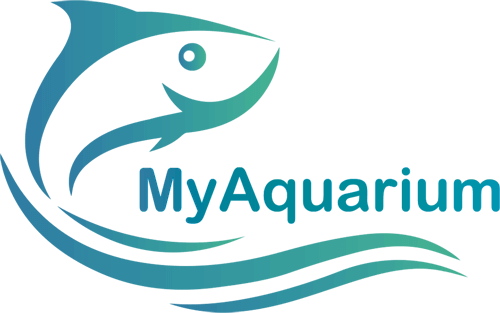The Neon Blue Rasbora (Sundadanio axelrodi) is a very peaceful, active and beautiful looking small schooling fish. The species is ideal to compose planted tanks, but it needs specific parameters and great water quality so that it can thrive and, therefore, it’s not a recommended fish for beginner hobbysts.
In the wild, the Neon Blue Rasbora is found on the Bangka, Sumatra and Borneo islands. This fish usually inhabits streams with dark waters, usually associated with ancient swamps. The water in these places has a brown color due to the release of tannins and other chemicals from the organic matter decomposition.
One of the main difficulties in keeping these fish in tanks is also related to their natural habitat. For example, the streams from which they come have very soft, acidic water and are often poorly lit due to the vegetation accumulation of above and on their banks. In much of Southeast Asia, these precious biotopes are threatened by plantations, construction and other human activities.
The Neon Blue Rasbora has a very bright dark blue color on the upper part of the body, and the lower part is usually red and the rest of the body is transparent. In addition, males have a black anal fin, which is much darker in dominant fish. The fin even looks a little weird and can be mistaken for hanging poop.
Technical Details
Name: Neon Blue Rasbora, Axelrod’s Rasbora;
Scientific Name: Sundadanio axelrodi (Brittan, 1976);
Family: Cyprinidae;
Species Origin: Asia (Borneo, Bangka and Sumatra);
Length: Up to 1 inch;
Life Span: 2 – 5 years;
Care Level: Moderate;
Water Parameters
pH: Maintain the pH of the water between 4.0 – 6.5;
Water Hardness: Between 2– 5;
Temperature: Must be kept between 22.8 – 26.1°C;
Care
Food
Omnivorous. The Neon Blue Rasbora can be a little picky and won’t accept dry food at first. However, once they are more comfortable in the tank, they will start eating them without any problems.
Always offer small live or frozen foods such as daphnia, brine shrimp and bloodworms. This type of food helps to enhance the fish colors.
Temperament / Behavior
The Neon Blue Rasbora is considered a very peaceful fish. To make them feel more comfortable in the tank, you should keep them in groups of at least six fish. These animals are usually quite active and seem to like areas with little water flow, as well as quieter places with no other fish.
Keeping them in large groups will not only make the fish less nervous, it will also make them behave more naturally. In addition, males tend to have their colors well highlighted as they compete with each other for the attention of females.
Finally, the species prefers to swim in the middle and upper region of the tank.
Tank Mates
As much as the Neon Blue Rasbora is a peaceful fish, it’s still not an ideal fish to compose community tanks, since it’s very small and can become a meal for other species.
It will do much better if kept in its own tank or with other species that enjoy the same water conditions, such as Boraras, Eirmotus and Trigonostigma.
If geography isn’t an issue for you, some other excellent options include, for example, N. mortenthaleri, Green Neon Tetra and Hyphessobrycon amandae.
See Also:
Breeding / Mating
Adult males are much more colorful and noticeably thinner than females. In many cases, they display dark colors on the anterior part of the anal fin, while others may display reddish colors. Females, in turn, have a transparent anal fin.
This species also exhibits unique dimorphism in the musculature and structure of the shoulder girdle, skeleton, as well as the Weberian apparatus, allowing them to produce audible croaking sounds when stressed.
Unfortunately, these fish are not often bred in captivity, as it’s quite difficult to reproduce the fluctuating water conditions they need to spawn.
However, there are some reports of successful breeding. Adult fish were kept in huge groups within well-established, heavily planted tanks.
The pH should be below 6.0 with the other parameters within the ranges suggested in this post, the most important factor being that they remain stable. However, simulating dark water conditions using peat or any other material that can stain the water is highly beneficial in encouraging spawning.
Avoid bright lights in the tank. Also, feed the fish live and frozen food and they should get into breeding conditions, and if the tank has the necessary balance between cover and water conditions, the fry should emerge without further intervention.
Fish Tank Size
The fish tank must have at least 10 gallons for a group of ten fish. If you want to keep an even bigger shoal, try to put them in tanks with 15 or 20 gallons.
The Neon Blue Rasbora isn’t a fish suitable for beginners, as it has specific requirements regarding water parameters such as temperature, pH level and hardness.
Ideally, the tank should simulate its natural habitat. Therefore you should provide an environment with dark water and dense vegetation. To simulate, add java ferns, java moss and cryptocorynes. Floating plants also help, as they create a darker environment for the fish.
Finally, add almond leaves, logs and roots to color the water with tannins.
References
Kottelat, M. and K.E. Witte, 1999. Two new species of Microrasbora from Thailand and Myanmar, with two new generic names for small Southeast Asian cyprinid fishes (Teleostei: Cyprinidae). J. South Asian Nat. Hist. 4(1):49-56. (Ref. 38434)




